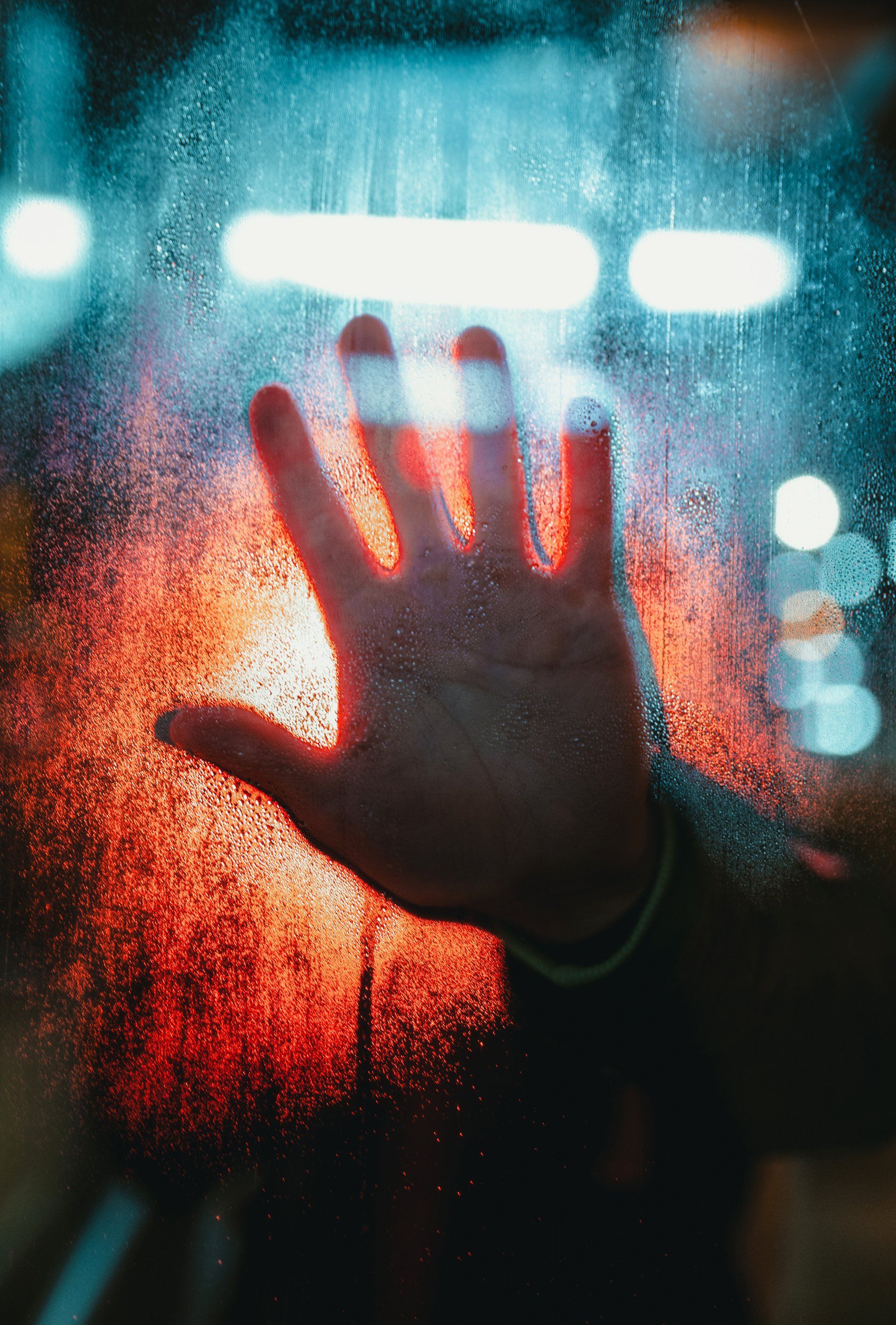How UV light damages viruses
The research and the proof
There's a growing and impressive body of knowledge, research and insight revealing the power of UV light for killing off the Covid-19 virus. But don't just take our word for it. Follow the science! We've delved into five different articles, all from respected sources, about UV light, the discoveries scientists have already made, and new insights that are coming to light.
NPR on germicidal UV
NPR is an independent, not-for-profit American media organisation whose goal is to 'create a more informed public' against a landscape of false news. In their report they talk about how germicidal UV, also called GUV, kills off viruses, bacteria and other microorganisms.
As they confirm, research already shows how germicidal UV inactivates the airborne microbes that spread nasty diseases like measles, TB and SARS-CoV-1, a close relation of the Covid-19 virus. Now, as it becomes clear the virus can spread via microscopic floating particles called aerosols, GUV is coming into its own to help disinfect risky indoor settings.
In their words, “As the science continues to evolve, UV could emerge as an attractive safeguard against airborne transmission — one with a track record against previous pathogens — that can be deployed to cut down the risk of infectious aerosols accumulating in indoor settings such as schools, public buildings and businesses.”
In the USA, UV is already widely used to decontaminate public transport and hospitals themselves, as well as to disinfect face masks. Talking about a UV disinfecting system fitted in one US restaurant, the article says, "Research shows close to 90% of airborne particles from a previous coronavirus (SARS-CoV-1) can be inactivated in about 16 seconds when exposed to the same strength of UV as in the restaurant's ceiling.”
NewsWise on killing Covid-19 with UV light
As the NewsWise website reports, it is entirely feasible we'll soon see personal, hand-held UV devices in the shops, designed to emit the kind of high intensity ultraviolet light that disinfects by killing the Coronavirus. Such devices are being worked on at the moment by teams at Penn State University, the University of Minnesota, and a couple of universities in Japan.
The article talks about the type of ultraviolet radiation used to kill the virus, falling into the 200 - 300 nanometer range and making it incapable of reproducing and infecting more people. As the article says, “Widespread adoption of this more efficient UV approach is much in demand in the current situation of a world-wide pandemic”.
The issue, until fairly recently, was that these high dose UV lights typically used a very expensive Mercury-containing gas discharge lamp, which took a lot of power to run and was also dangerous simpkl,y because Mercury is so toxic. They also had a short lifetime, were impractically big and bulky, and hard to dispose of safely.
Luckily there's a solution in the form of today's new, high performance UV light emitting diodes (LEDs), which last longer, don't weigh nearly as much, are energy efficient, and don't emit nasty chemicals that harm the environment.
Cnet on 'nature's hand sanitiser'
Cnet reports that disinfection by UV light is nothing new. In fact the International Ultraviolet Association confirms it has been used for at least 40 years to help clean water and air. Plenty of consumer devices also use UV light to disinfect small items, for example self-cleaning water bottles and mobile phone cases.
Man-made UV-C light is used in UV light sanitisers. The US's National Academy of Sciences confirms it works, since UV-C light is strong enough to actually destroy the genetic material, the DNA and RNA the virus and every other living thing needs to survive and reproduce. The article also confirms something important – ordinary sunlight doesn't do the trick.
Live Science on UV light and SARS-CoV-2
Live Science confirms that the right kind of UV light kills the Covid-19 virus, at the right dosage. They also make it clear that 'many at-home UV-light devices claiming to kill SARS-CoV-2 likely aren't a safe bet'.
Home UVC lamps can damage human tissue, and many also come with very low or no quality control. So there's no guarantee you will eliminate the virus. While UVC does kill the virus, you have to give it a big enough dose, and that's impossible with at-home devices. There's more. UVC, which has the shortest wavelength and gives off the highest energy, acts as a disinfectant, but you need to use UVC at a specific wavelength, around 254 nanometres, to inactivate coronaviruses like SARS, MERS and Covid-19.
UVC-254 works so well simply because its specific wavelength causes damage to a living thing's DNA and RNA. Given enough exposure, viruses can't reproduce so are effectively killed off or inactivated. That goes for humans, too. As one expert said, "The data that backs up this technology, the ease of use, and the non-contact nature" of UVC all make it a valuable tool, but it's vital to use UV sensibly, safely and accurately, since it can seriously damage human skin and eyes.
In a hospital setting, the shape of the room, shadows, the timing of the disinfection and the type of material being disinfected all matter when figuring out the right dose of UVC, and home devices just don't offer the precision required. As one commentator said, "Having something you think is clean, but it's not, is worse than something that you know is dirty", because you feel it's safe when it isn't.
Science Mag on a shorter wavelength of UV light to kill viruses
Back in 2018 Science Mag revealed how hospitals and laboratories often use UV to clean areas, but it has always been dangerous to humans. Fortunately scientists have discovered a safer wavelength that's just as effective, a shorter wavelength of UV light that can, “slow the spread of disease in schools, crowded airplanes, food processing plants, and even operating rooms and labs.”
UV lights disinfect by disrupting a virus's molecular bonds, the ones that hold genetic material together. Usually these lights have a wavelength of 254 nanometres, relatively short and in the C category. This can penetrate the skin and eyes and lead to cancers and eye damage.
'Far UVC light', on the other hand, doesn't get under the skin, so can eliminate bacteria without harming people. Having said that, their properties and behaviour differ slightly under varying conditions. It's important to know that far UV bands are not readily absorbed by water vapour, which means contamination in aerosols may not be irradicated.
The team tested ‘excimer lamps', famed for LASIK eye surgery, which blend krypton and chlorine gases to create single-wavelength photons rather than a broad spectrum, ranging from 207 nanometres to 222 nanometres. Far UV bands have their niche applications but there are still related safety concerns.
As it turns out, our UVC light works particularly well as it’s wavelength is in the mid to top end of the UVC range to stop transmission of the virus, water vapour or not. Watch out, Covid-19!
Cool Tech UV disinfecting lights work perfectly every time
The power of UVC has been proven many times over. Our disinfecting UV lights are based on the very latest technology and science, making them safe and highly effective when used correctly. If you'd like to talk UV disinfection, give us a call – we'll be delighted to answer your questions.
- https://www.npr.org/sections/health-shots/2020/07/13/890387205/coronavirus-sparks-new-interest-in-using-ultraviolet-light-to-disinfect-indoor-a?t=1597156143956
- https://www.newswise.com/coronavirus/killing-corona-virus-with-uv-light/?article_id=732412
- https://www.cnet.com/health/can-uv-light-protect-you-from-covid-19/
- https://www.livescience.com/uv-light-kill-coronavirus.html
- https://www.sciencemag.org/news/2018/01/could-ultraviolet-lamps-slow-spread-flu










